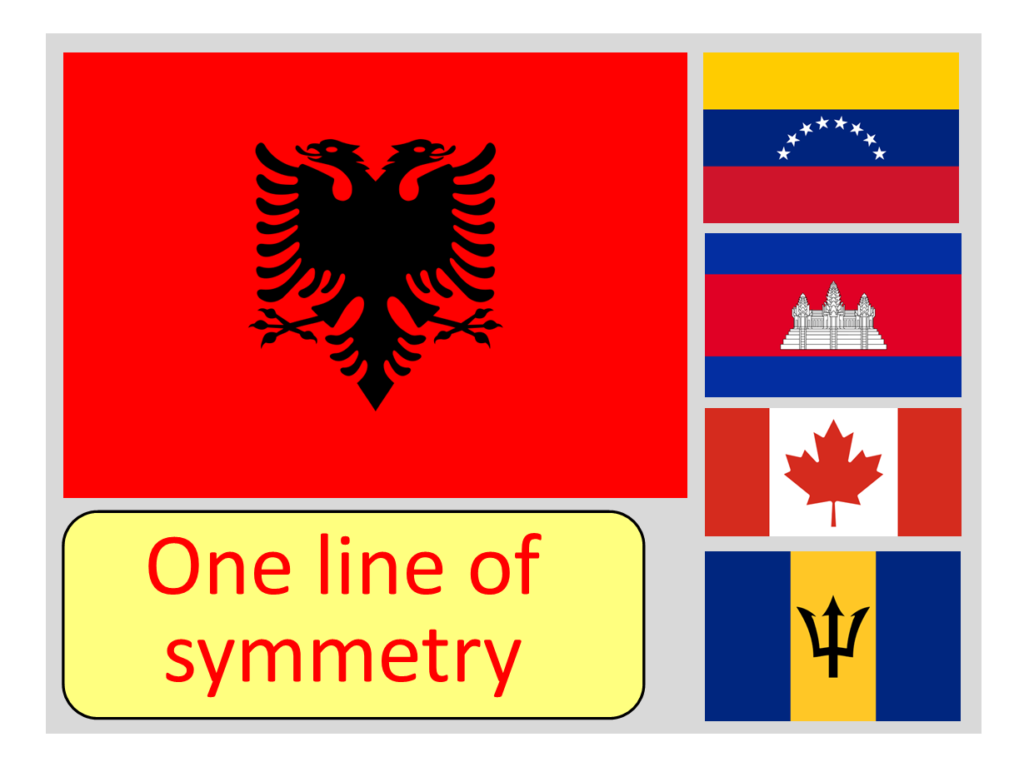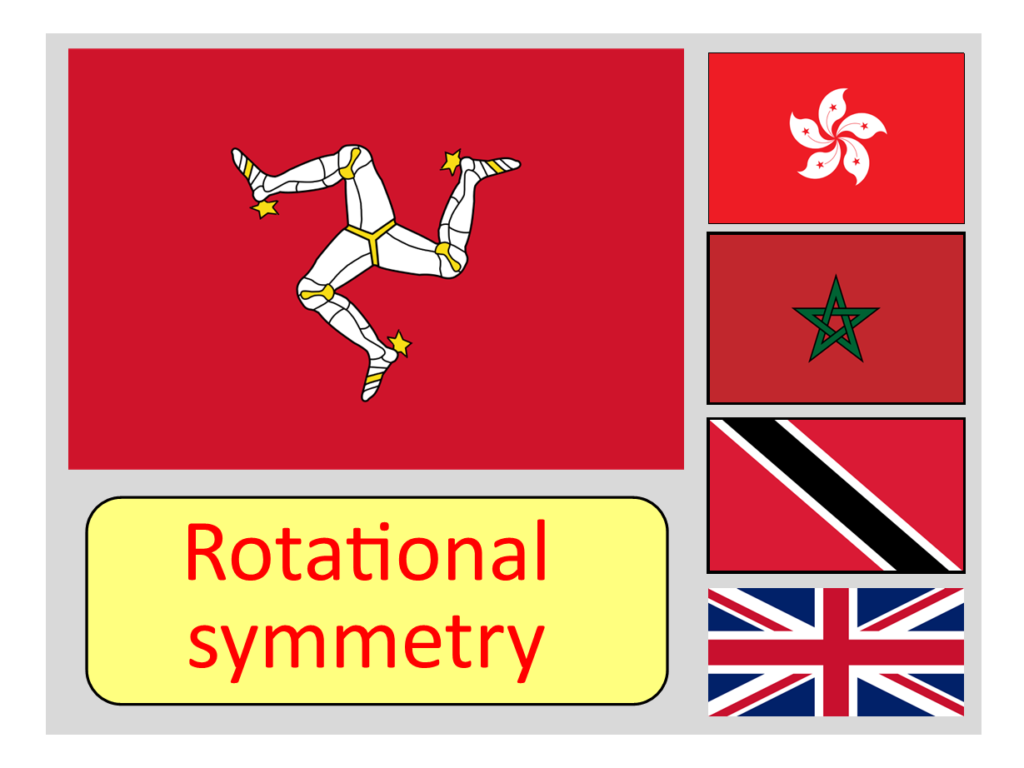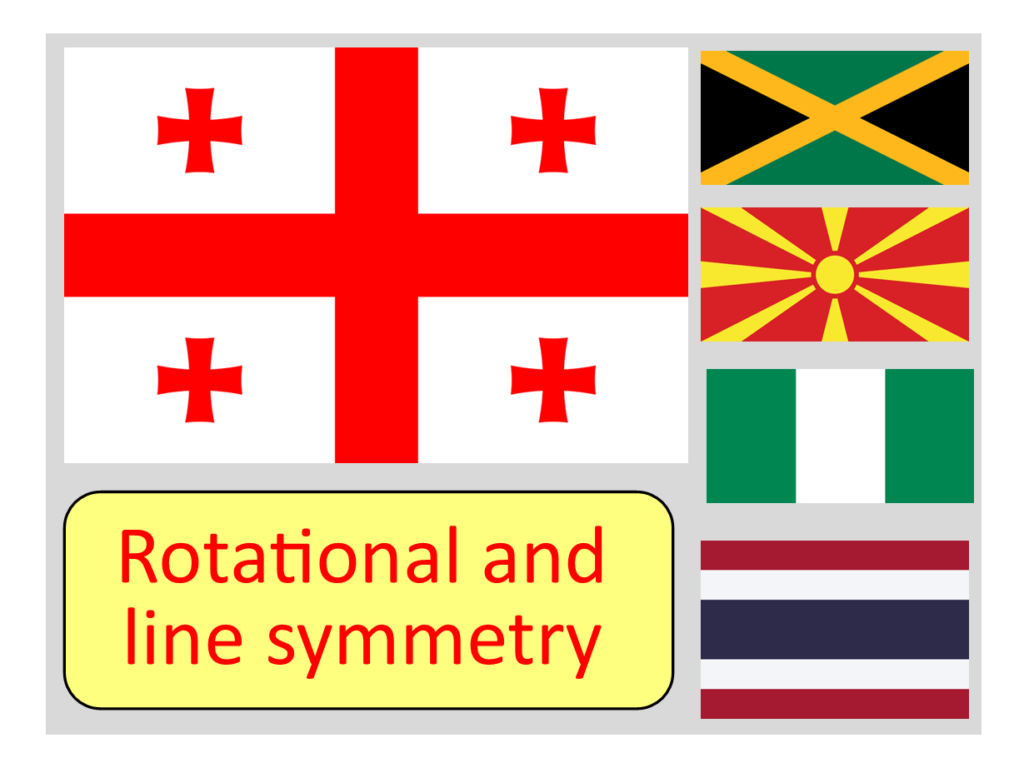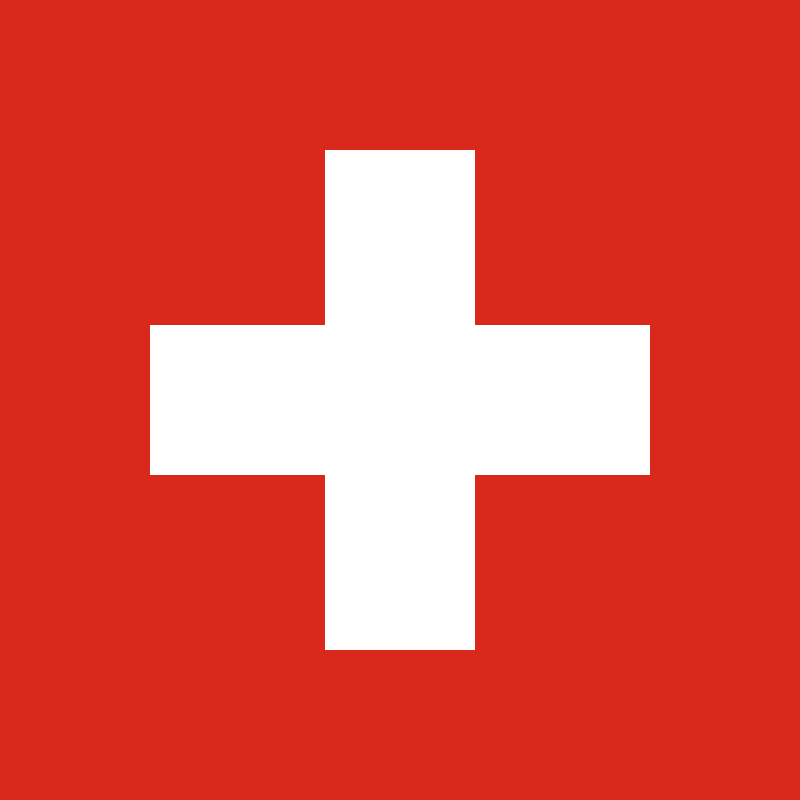NOTE: this blog is limited to flags of Sovereign States (“nations” – and two “territories” that were just too cool to miss out), and is not concerned with any politics / symbolism in flags, it’s purely about their shapes and colours!

5) NEITHER LINE NOR ROTATIONAL SYMMETRY e.g. NEPAL: no symmetry at all, and the only pentagonal flag (5 sides – count them!) – it’s not even rectangular! It also features a 12-pointed star and a partly-hidden 16-pointed star. So cool! Also pictured are the flags of Bhutan (white dragon), Seychelles, Wales (red dragon) and Kuwait (green, black and red trapezia + a white rectangle), none of which have line nor rotational symmetry.

4) LINE SYMMETRY e.g. ALBANIA: one vertical line of symmetry (the left and right sides are reflections of each other), but no rotational symmetry. The black creature is apparently a double-headed eagle – so there! Also pictured are the flags of Venezuela (arc of stars), Cambodia (temple), Canada (maple leaf) and Barbados (black trident), all of which share the same vertical line symmetry, while the flags of Sweden, Finland, Norway, Denmark and Iceland all have one horizontal line of symmetry (top half reflects exactly onto bottom half). Can you find any more national flags with one line of symmetry? There are loads.

3) LOGO WITH ROTATIONAL SYMMETRY e.g. ISLE OF MAN: beloved of mathematicians for the rotational symmetry order 3 of the leggy logo in the middle. The rotational symmetry is of “order 3” because it maps exactly onto itself three times as you rotate it through a whole circle (namely after 0⁰, 120⁰, 240⁰). Strictly speaking the flag as a whole does not have rotational symmetry because the red rectangle would be facing the wrong way after 120⁰ and 240⁰ rotations. Top right is the flag of Hong Kong: its flower logo has rotational symmetry of order 5 – love it!!
Also pictured is MOROCCO: the Interlaced Pentagram in the middle has rotational symmetry (of order 5) but no lines of symmetry. Interlaced refers to the way you can see which line goes over which when they cross. The Pentagram is a 5-pointed star that you can draw in one stroke without the pen leaving the paper. The great geometer Roger Penrose told me that if you could not see the internal lines then it would be called a Pentacle rather than a pentagram.
Also pictured is TRINIDAD AND TOBAGO (red with black stripe) for its ROTATIONAL SYMMETRY OF THE WHOLE FLAG. The UNITED KINGDOM flag also shares this property. It nearly has line symmetry too but note the way the thin red lines are alternately at the top and then the bottom of the diagonal white stripes (meaning that it looks slightly different if reflected upside down, but the same if you spin it through 180⁰).

2) ROTATIONAL AND LINE SYMMETRY e.g. GEORGIA: highly symmetric because it looks exactly the same if you rotate it 180⁰ or if you reflect it vertically or horizontally. The flag of Israel with its central hexagram (6-pointed star made of two overlapping equilateral triangles) shares the same symmetry, as do the flags of North Macedonia (8 beautiful rays of sunshine!), Nigeria and Thailand. Can you find any more?

1) AND THE WINNER IS: SWITZERLAND: one of only two countries whose flag is a square rather than a rectangle (the other is VATICAN – the world’s smallest country). This gives the entire flag four lines of symmetry (it reflects onto itself horizontally, vertically or through either diagonal) and rotational symmetry of order 4, making it the most symmetric flag in the world.
If you have read this far then congratulations you are now a vexillologist (who studies flags) and hopefully also a vexillophile (who admires / loves flags).